Edinburgh has been described as having a history as dark as Satan’s oxters. Not surprisingly, the place is hoaching with ghosts. Here are just 30 of the hundreds you might meet in Auld Reekie, from MJ STEEL COLLINS.
1. Covenanter’s Prison, Greyfriar’s Kirkyard, 26A Candlemaker Row, EH1
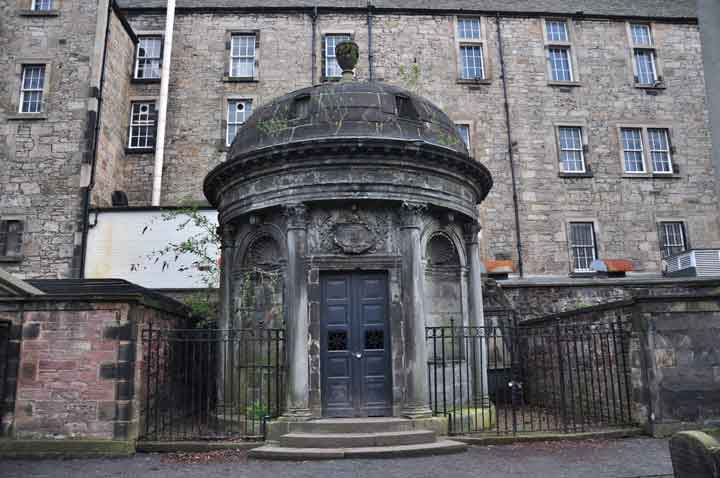
The current haunting of the Mackenzie Poltergeist started when a homeless man seeking shelter for the night in the tomb of Bluidy George Mackenzie found himself in a pit of putrefying corpses when the floor collapsed.
The dank polt can be found lurking in the Black Mausoleum within Covenanter’s Prison, which is kept locked, accessible only by participating in a City of the Dead tour.
The entity has a penchant for being nasty, causing people to faint, be scratched, bruised, cut and generally terrified.
2. Edinburgh Castle, Castlehill, EH1
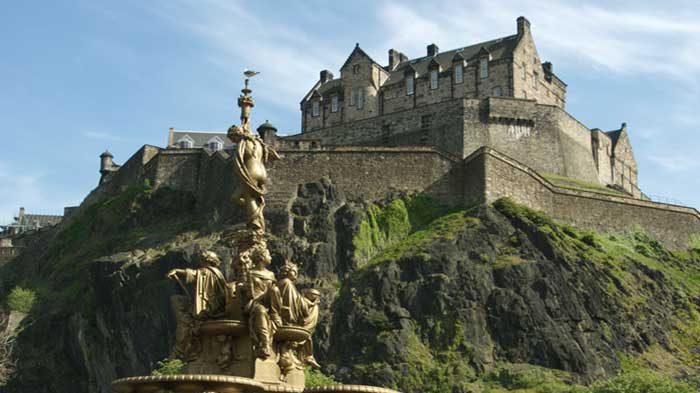
Recent research indicates that the castle has been involved in 26 sieges, making it one of the most attacked places on Earth!
Ghosts range from a phantom piper who plays on the ramparts, something that lurks within the gift shop, phantom drummer and perhaps the smelliest ghost on record.
The story goes that a prisoner of war who decided to escape the dungeons by hiding in a dung barrow. Unfortunately, he died when the waste was thrown in a pit, and his spirit’s presence is indicated by a particularly unpleasant smell.
3. 15 Learmonth Gardens, EH4
Sir Alexander Hay Seton and his wife Zeyla came back from their 1936 tour of Egypt with a piece of bone surreptitiously pilfered by Zeyla from a newly opened grave the couple visited.
The spirit of whomever the bone belonged to in life was clearly cheesed off, as a haunting soon followed, featuring violent poltergeist activity, and a dark, shrouded figure seen flitting about the house.
After a particularly memorable dinner party, in which the table, food and all was dashed against a wall when Zeyla decided to show off the bone, it was exorcised and burned.
4. Southbridge Vaults, EH1
Several spirits roam the city below the ground, which is certainly not a place for the faint hearted.
The most negative spirit there is known as “Mister Boots” – thought to have been a landlord, pimp or murderer in life, his form has been photographed and witnessed by several people at once – otherwise he can be felt breathing down the neck of the unsuspecting and ordering them to GET OUT…
Burke and Hare are also reputed to have carried the bodies of their victims through the vaults.
5. Mary King’s Close, High St, 2 Warrinston’s Close, EH1
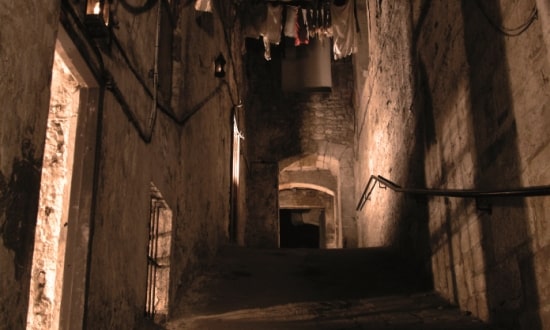
Another of Edinburgh’s underground streets, where legend has it, victims of the plague were sealed into their fate and tales of hauntings date back to the 17th century.
One such tale is that of the Coltheart family, who took up residence in a house with suspiciously cheap rent within the Close, only to flee a short time later after being treated to a panorama of grotesque apparitions prancing across their bedroom.
The spirit of a young girl, believed to have died in the plague, is said to haunt the Close, and people regularly leave toys and sweets for her.
6. The Howard, 34 Great King St, EH3
This Edinburgh hotel is haunted an amiable female shade, christened Alice, who apparently causes little fear in those who encounter her.
The haunting is of a relatively mild nature, doors opening by themselves, and Alice herself being seen in the Hanover suite.
7. The Royal Mile, Edinburgh EH1
A phantom piper, a ubiquitous spook in Scotland, can be heard skirling away below the ground.
A mysterious tunnel was found one day below the Royal Mile, and the piper, like many of his ilk across the country, volunteered to see where it went, playing his pipes as he went on his way.
Of course, as these tales go, he was never seen again; however, that doesn’t mean to say tourists might not hear a faint playing of the bagpipes, which most definitely does not come from a nearby earnest busker…
8. The Mitre Bar, 131-132 High St, EH1
Also located in the Royal Mile, this pub is alleged to be haunted by the spirit of Archbishop John Spottiswode of St Andrews. He was involved in kicking off events that led to the chaos of the Covenanter wars, with the introduction of The Common Prayer book and attempts to make the King the head of the Church in Scotland in 1637.
He was forced to flee Edinburgh due to this; it is said that he bricked his ceremonial gear in his home before fleeing, the same building which now houses the Mitre. After he left, he was deposed as Archbishop on several lurid charges, including drinking, gambling, sexual impropriety and sacrilege .
His angry ghost is said to haunt the Mitre, it being blamed for all sorts of strange phenomena, though he hasn’t actually been seen – nor has his stash of regalia ever been located.
9. Private Home, The High Street, EH1
During the 1970s, this Edinburgh home of a civil servant was haunted by what appeared to be a ghostly monk, whose apparition was seen flitting about.
Other phenomena also included lights going off, temperature drops and items going missing. The house owner considered it a friendly ghost, asking people not to scream if they saw it.
10. West Bow, EH1
The home of the Wizard of West Bow was located here. In 1670, the ‘Wizard’ aka Major Thomas Weir and his unfortunate sister Grizel were burnt at the stake for bestiality, incest and adultery.
Weir was also an occultist, said to go on mysterious trips in a coach with Satan. Following the Weirs’ executions, the Major’s ghost was said to haunt the area and his former home. Tales included a fiery horse appearing in the alley behind the house, and terrible apparitions terrifying a lady of the town and her maid heading home late one night.
11. Dublin Street, New Town EH3
Circa the 1950s, an art student experienced poltergeist activity in his studio, which had once been the dispensary of the nearby St David’s Roman Catholic Convent.
One night, the student and two friends briefly living with him were awoken by the sound of a woman crying. As a result, the student sought help from the local nuns.
The studio was demolished several years ago.
12. James Gillespie’s High School, Lauderdale Street, EH9
Once the site of Wrychtishousis, a mansion, which was the city residence of Lt Robertson in the late 18th century.
Lt Robertson had a slave named Black Tom, who often complained encountering the apparition of a headless woman holding a baby rising out of the floor. Not much attention was paid to this story, despite Tom’s room having a strange atmosphere. Many put it down to his drinking.
When the mansion was being demolished for the construction of Gillespies’ Hospital, a box was buried in Tom’s former room containing the skeleton of a woman with a severed head and the skeleton of a baby in a pillowcase…
14. Trinity, EH5
An old house in this upmarket part of Edinburgh was haunted by the spirit of a little girl.
Her apparition was seen several times, and witnesses reported the sound of disembodied voices and a bouncing ball.
15. Edinburgh Festival Theatre, Nicolson St, EH8
Thought to be haunted by the illusionist The Great Lafayette, who met his end when a previous theatre on the site, The Empire Palace Theatre, suffered a massive fire in 1911.
A dark figure, thought be The Great Lafayette, has been encountered by staff at several locations in the theatre. Other phenomenon attributed to the phantom include flickering lights.
Read about The Great Lafayette’s demise on Spooky Isles.
16. Princes Street/Hanover Street EH2
At the turn of the 20th century, 23-year-old Geoffrey Anderson was turning the corner from Princes Street into Hanover Street, when he saw a horse, drawing a carriage behind it, standing 20 yards away facing him. An everyday occurrence over 100 years ago.
What made it unusual was the ‘hour glass shaped figure’, approximately four and a half feet long, and two and half feet high that rose out of the gutter, moving in a caterpillar like fashion towards the horse. The strange thing attached itself to the horse’s throat, before vanishing. Anderson and another passer-by went to the aid of the terrified animal, which perhaps, as posited by Ron Halliday in Edinburgh After Dark, was some kind of vampire.
17. Scottish Parliament, Holyrood, FH99
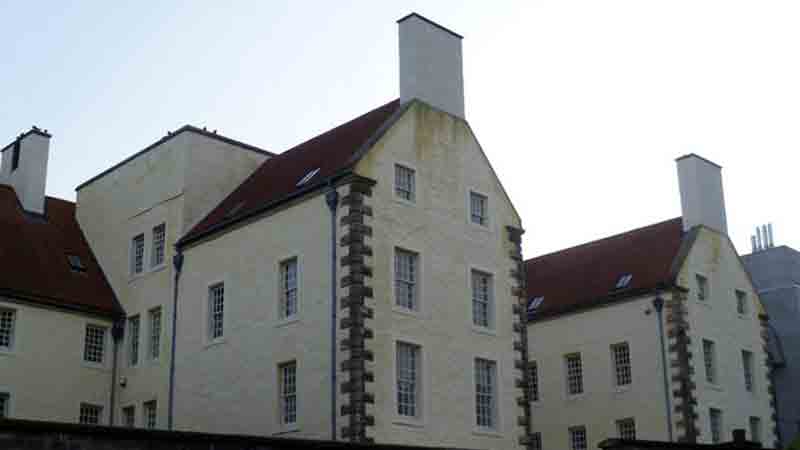
The aforementioned Ron Halliday investigated the brand new Scottish Parliament building after hearing of some strange incidents there in 2009. The building had only been in use for five years at that point, though part of the grounds includes the centuries old Queensberry House.
There is a grisly tale told about occurrences in that house, ironically said to have taken place on the evening the 1707 Treaty of the Union was signed, which dissolved the Scottish Parliament, centralizing power on Westminster instead.
Queensberry House was home to James Douglas, the second Duke of Queensberry. The Duke’s eldest son, also named James, the Earl of Drumlanrig, is said to have been insane.
On the night the Duke went to attend the signing of the Treat, the house was more or less empty, apart from a young boy servant looking after the kitchen. The Earl of Drumlanrig broke out of the room he was locked in, and stuck the young kitchen boy on the spit, roasting him to death. The paranormal after effects are perhaps still felt to this day…
18. The Scotsman Hotel, North Bridge, EH1
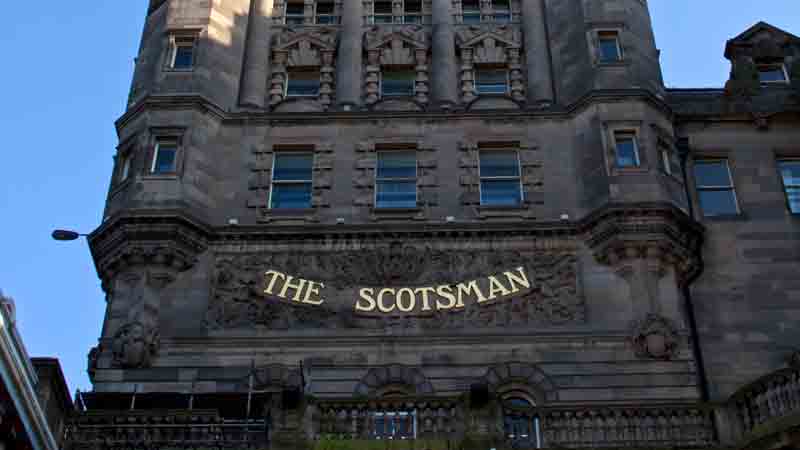
Opening for business in 2001, the Scotsman Hotel building was once headquarters to the newspapers The Scotsman, and the Edinburgh Evening News. In the mid 1990s, the building itself became news thanks to reported ghostly activity.
A journalist was finishing up for the day down in the basement where the old presses were stored when he saw the ghost of a man, replete in a printers apron, stride confidently by and straight through a closed door, which had been locked for weeks. The incident resulted in a medium being brought in.
Other staff reported incidents involving the cheeky spirit of a blonde haired woman, whilst a security guard encountered the ghost of a colleague who had been dead for four years.
19. Hunter’s Tryst, Oxgangs Road, EH13
A white lady is reputed to haunt this Edinburgh pub, which served in the past as an old coaching inn.
20. Charlotte Street/Charlotte Square, EH2
About four ghosts, also recorded by the late Andrew Green, haunt this vicinity in Edinburgh. One ghost is said to be of a female beggar, who vanishes if someone goes near.
Another female ghost, somewhat higher up the social strata and decked out in 18th century fashion, has been reported walking towards the Square, fading when she turns left. A ghostly carriage is also said to pull up outside a home in the Square, and disappear.
There is also said to be the ghost of a male beggar – who, as Alan Murdie writes in Haunted Edinburgh – is tied up with the female beggar is some tales. It gets more complicated when the apparition is variously described as an old man, or a monk wearing a habit!
21. Ann Street, EH2
The crisis apparition of a Mr. Swan appeared at a private home here in the late 19th century, waving good bye to his no doubt astonished family, as he drowned at sea many miles away.
His spirit is still occasionally said to come back.
22. Hazeldean Terrace, EH13
A ghostly soldier haunted a house here in Edinburgh, and hit the press thanks to poltergeist like activity in 1957.
23. Museum of Childhood, 42 High Street, EH1
The museum was considered to be haunted by its founder Patrick Murray, who opened the attraction in 1955.
Murray reported a feeling of being watched, the sound of footsteps on the floor above his office and strange laughter, whispering in empty parts of the building. He even reported hearing a child crying.
24. A7, Edinburgh to Stow
A number of phantom vehicles have been seen on this Edinburgh road, causing numerous accidents.
A phantom lorry is the most commonly reported apparition, but more recently, an orange Austin car has been reported.
25. Arthur’s Seat, EH8
An ancient volcano, now a popular hill for hikers, entered the annals of the paranormal in 1836.
Small boys who went rabbit hunting uncovered something else entirely when they found a small cave. Inside were 13 miniature coffins, which have perplexed the boffins to this day as no one knows exactly what they are for, but plenty of theories abound.
Eight of the coffins can be seen at the National Museum of Scotland.
26. Constitution Street, Leith, EH6
An elderly woman, holding a posy and wearing old-fashioned clothes, has been seen heading from Coatfield Lane and disappearing on approaching Queen Charlotte Street. Others have reported witnessing the ghost of a man in Highland dress running down the road and vanishing late at night.
27. The Banshee Labyrinth, Niddry St, EH1
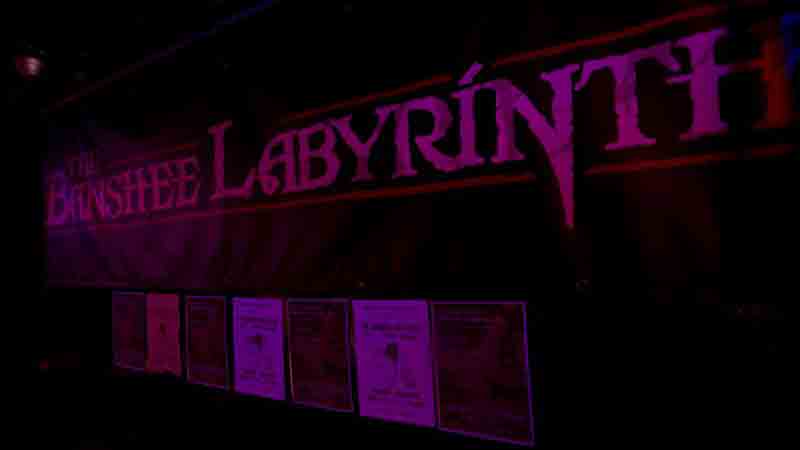
Billing itself as Scotland’s most haunted pub, the Banshee forms part of the infamous Edinburgh vaults network.
On the venue’s website, they tell the tale that when it was being refurbished, the workmen heard a bloodcurdling howl – a few hours later, one of them was informed of the death of a relative.
Also haunting the pub is Rosie, a former prostitute, who scratches men’s back, and Six Finger Bill, who sits under the tables and grabs at punter’s ankles.
Find out more here about The Banshee Labyrinth.
28. Western General Hospital, Crewe Road South, EH4
The hospital opened to patients in 1868. Over a century later, a nurse named Ellen working the night shift had an experience she would not forget in a while.
Ellen was heading back into the ward when she encountered an elderly woman walking the corridor. Thinking that the nightdress the patient wore was rather old fashioned, Ellen thought it best to get the old woman back in bed.
Just as she was about to ask what ward the patient had come from, Ellen suddenly noticed that the old woman’s legs vanished through the floor. As Ellen took this in, the apparition walked towards and right through the nurse.
29. Calton Hill, EH7
In the 1600s, a gate into the fairy realm was said to exist on the hill, and visible only to people with Second Sight.
30. Bells Wynd, EH1
During the 18th century in a house now long gone, the body of Mrs. Guthrie, murdered by her husband after she had an affair, lay undiscovered in a locked room for 21 years.
Her ghost was seen at various times flitting about the Wynd wearing a nightdress. A locksmith curious about the property discovered the corpse after breaking in.
Is Edinburgh Really The Most Haunted Place In Scotland?
(Interview originally published on Spooky Isles on 7 October 2017.)
GREGOR STEWART and MJ STEEL COLLINS discuss the Scottish Capital’s reputation as being one of the most haunted places in the UK
MJ STEEL COLLINS: Edinburgh is variously described as the most haunted city in Scotland, the UK and even the world – what are your thoughts on these claims to fame?
GREGOR STEWART: It certainly has the right to claim to be one of the most haunted cities in the world, but it is a question of on what basis that claim is made. Edinburgh probably has more ghost stories connected to it than most towns, but if you look at the number of ghosts for the area of the town, or the population, then towns like St Andrews are, in my opinion, more haunted.
Does Edinburgh really have the edge over the likes of Glasgow, also said in recent years to be just as haunted, when it comes to ghosts and hauntings, and why do you think this?
I have written about the ghosts of Edinburgh and the ghosts of Glasgow, and I do believe that Edinburgh can claim to be more haunted than Glasgow, both on the number of ghosts and based on area or population. That is not to say Glasgow is not a very haunted city, it is, and people are often surprised to hear just how many haunted locations there are, as they simply do not get the same levels of publicity as the Edinburgh locations do.
Why do you think Edinburgh is so saturated with spirits?
The answer to this lies firmly in the history. Edinburgh was, for a very long time, a relatively small walled city, with the prominent castle at one end, which was the target for several invasions from the English, and battles to take it back by the Scots. Over overcrowding was a massive issue, forcing people to live in terrible conditions, crime was rife, and the punishments were swift and harsh.
Even if those who fell foul of the law did not face the death penalty, they still faced almost certain death, as the wounds from other punishments, such as floggings, would quickly become infected in the squalid living conditions. Centuries of suffering and violence led to thousands of deaths, with many of these resulting in reports of hauntings.
How do you think the ghost tourism industry in Edinburgh has enhanced the city’s reputation for being haunted?
The tourism industry has undoubtedly had a massive effect on Edinburgh’s reputation as a haunted hot spot. It is almost impossible to walk anywhere in the old town without seeing costumed guides advertising or leading tours. As a result, even people who did not come to the city with any real knowledge of the ghost stories, leave with some knowledge, and this all helps to spread the word.
Edinburgh has some seriously famous ghosts, such as the hauntings at Edinburgh Castle, The Mackenzie Poltergeist and Underground Edinburgh – what lesser known ghost stories from the Scottish Capital can you share with Spooky Isles?
Most definitely. Craigmillar Castle is a fantastic location that sits just a few miles outside the city centre, although still very much within the city boundaries. This castle dates back to the 14th century and has strong connections with Mary, Queen of Scots, yet is often missed by visitors to Edinburgh.
The castle is said to be haunted by a White Lady, who many speculate is the ghost of Queen Mary, and a man wearing full military dress, who has been seen silently walking across an area of grassland towards the castle. Even within the old town, there are several ghosts that are not well known.
Back in the old town, in Victoria Crescent, diners and revellers often report the shuffling sound of someone approaching, when there is no one there. This is believed to be the ghost of Angus Roy, a sailor who was forced to retire after a terrible accident that left him disfigured and with almost no use of one leg, resulting in him having to drag it along the ground.
He lived in Victoria Crescent, where he was teased by the local youths for his appearance and walk, leading him to become a recluse. When he died, his spirit is said to have remained, possibly due to the ongoing sound of laughter from those out enjoying themselves, just as the laughing children had driven him to stay in his house.
Another ghost story that really captures my attention and will be the subject of further research and possible a stand-alone book, is Major Thomas Weir. Major Weir was both a military man and one of strong religious beliefs, and a much-respected member of the community, who lived with his sister in Bow Street, close to the castle.
Around 1670, he issued a speech to a gathered crowd and sent shockwaves through the city when he confessed to practicing witchcraft and gave graphic details of his acts. He was arrested, as was his sister, who soon also started to confess to crimes of witchcraft.
It was clear that both were, in their old age, suffering from mental illness, however in these times, witchcraft carried the death penalty. Major Weir was burned at the stake, and his sister was hung.
Their former home became known as the most feared and haunted building in Edinburgh, leading to it eventually being pulled down, yet ghosts connected to both Major Weir, the Wizard of West Bow, and his sister, are still reported in the area. The tale of Major Weir, and his sudden transformation of character, is said to have in part influenced Robert Louis Stevenson when he created the character Dr Jekyll and Mr Hyde.
And finally – does Edinburgh really deserve its reputation for being so haunted, or is it all hype to bring in the tourists?
It does deserve its reputation, but as I mentioned earlier other towns and cities also deserve similar reputations. It is the publicity that the Edinburgh hauntings get that raise its profile and this brings tourists, and so it is a bit of both.
I am not suggesting that I think any of the locations are fake, it is simply that the hype and tourism is what has put Edinburgh on the map for paranormal enthusiasts.
Have you seen a ghost in Edinburgh? Tell us about it in the comments section below!

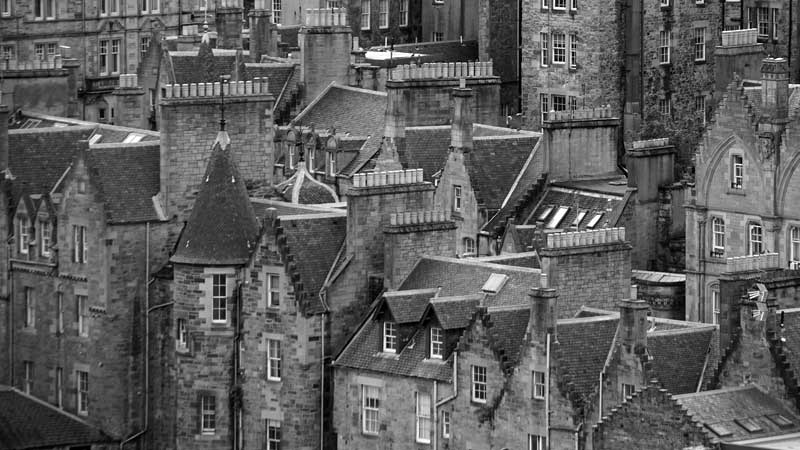

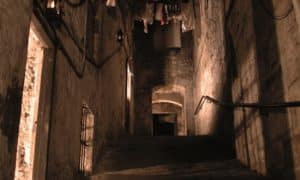
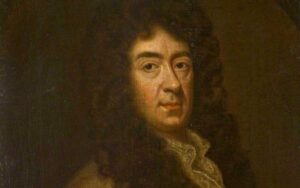
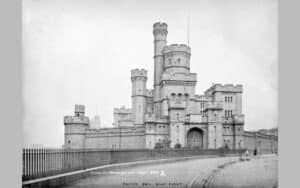
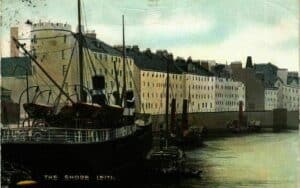

Glad to see “The Wizard/Warlock” of Bow street made it onto the list! There are quite a few others that I hadn’t heard of before. I would just like to draw attention to the misplacement of “Bluidy McKenzie’s vault. It is situated OUTSIDE of The Covenantor’s Prison, NOT within.
Absolutely brilliant article. I am intrigued about the Trinity EH5 story as I have never heard of it before and live there. Great stuff…
Thanks John, there’s tonnes of great spooky places to visit in Edinburgh – do tell us if you find anything interesting!